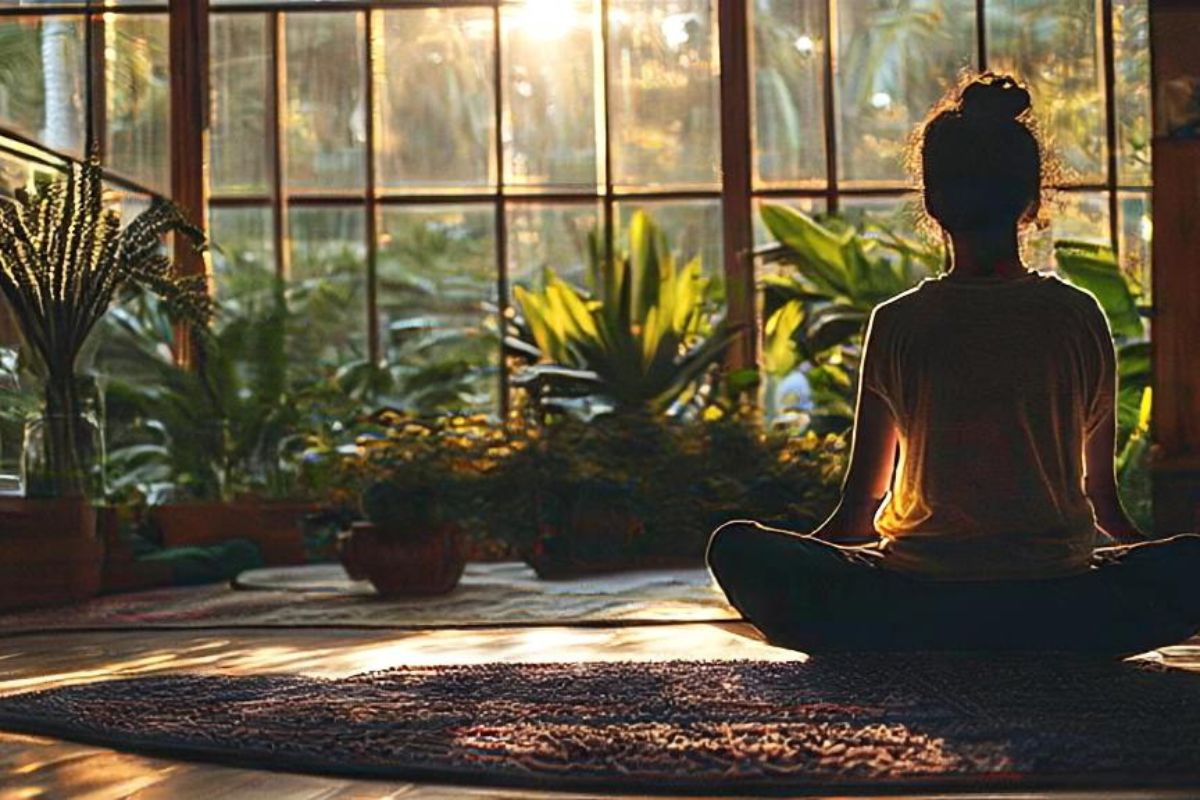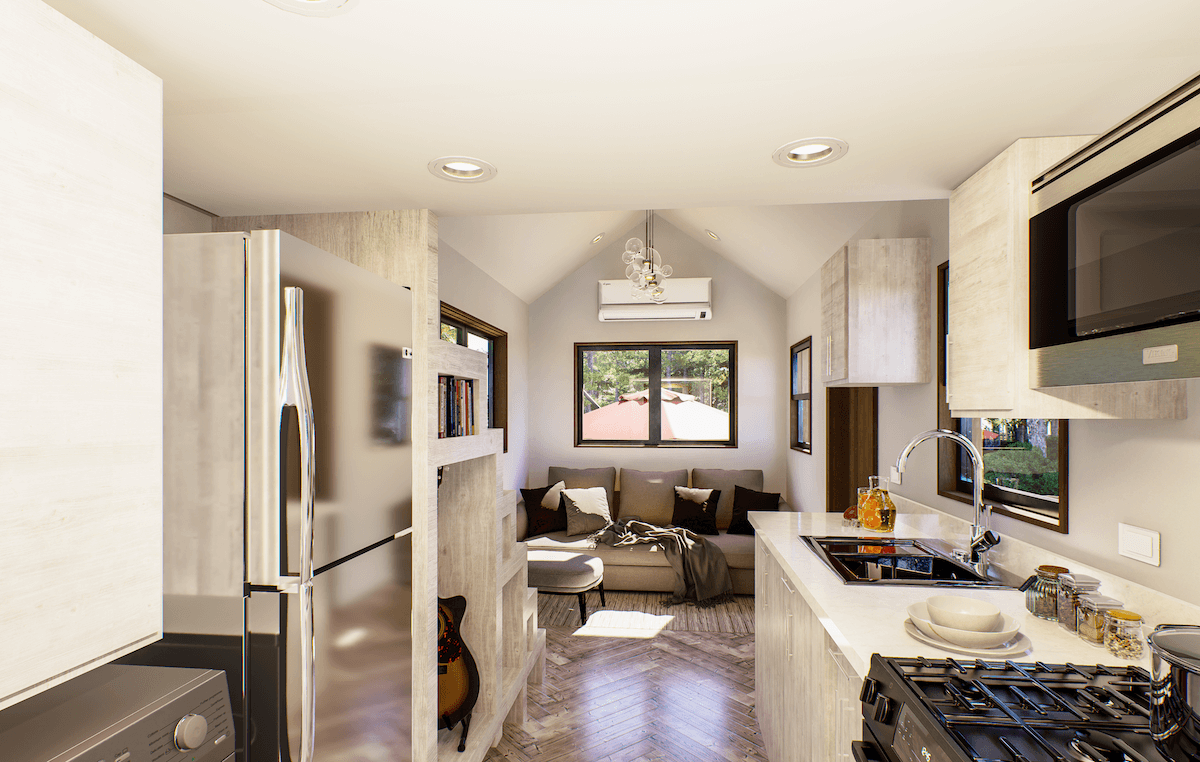Nowadays, commercial and residential interior design can boost mood, affect behavior, and even aid concentration at work. After all, it's not a coincidence that people use phrases like "closing walls" or "a space for creativity."
So, what's the secret? This article reveals every detail, from the influence of sunlight on people's biological processes to the pastel colors meaning and their use for treating depression. Read on!
How a well-thought-out interior design can positively influence mental health
One notable example highlighting the importance of interior design for mental health is the COVID-19 pandemic. According to the World Health Organization, within the first year of lockdowns, there was a 25% increase in individuals suffering from anxiety and depression. The main contributing factors were isolation and loneliness.
However, during those times, residential spaces were not designed for multifunctionality, making it challenging for people to adjust to the need for various activities within one home, such as cooking, working, and spending time with family. Yet, today, interior designers emphasize zoning. This applies not only to residential settings but also to commercial spaces.
How does design affect mood?
Design is the art of influencing human emotions and enhancing their moods using different components like color, lighting, layout, and texture. For example, red can spur productivity in office settings.
Natural lighting fosters a sense of uplifted spirits. Open spaces evoke feelings of freedom, while various natural textures can provide a pleasant tactical experience.
Let's have a closer look at how well-designed spaces influence people's well-being:
Elevated mood
Light and color play a special role in affecting a person's mood. For example, sunlight exposure helps the body produce more vitamin D. The lack of this organic compound leads to seasonal depression in autumn and winter. When it comes to colors, they are linked to psychological associations. For example, many people are cheerful when looking at yellow or orange hues.
Increased productivity
For a productivity boost, your interior design should be well-planned, minimalist, and avoid too many details. Scientific findings indicate that clutter-free spaces improve focus. Moreover, while it was previously believed that open-space working environments increased employees' readiness to solve tasks, many businesses now believe that it can be distracting.
Low levels of stress
To explain the concept of stress in simple words, it overwhelms the nervous system with too many complex stimuli. For example, this can be an abundance of decorations, a lack of coherence in design, or color superfluity in a single room. To alleviate stress, interior designers suggest creating relaxation zones in a minimalist style with soothing colors.
Stimulated creative thinking
Effective work zones should stimulate employees' creative thinking, and thoughtful interior design plays a crucial role in achieving this goal. For example, integrating distinctive textures, patterns, and vibrant colors can inspire genuine creativity.
Improved shopping behavior
Retailers organize their store spaces intentionally. For example, merchandising puts special emphasis on zoning. This involves proper space arrangement in commercial premises to increase sales. By using various visual techniques, such as uneven walls, contrasting colors, and bright banners, retailers can create focal points. They attract the consumer's attention and stimulate them to purchase products in specific areas.
.jpeg)
Does interior design affect human behavior?
Yes, interior design has a significant impact on behavior, a strategy long employed by retailers to drive sales. For example, many physical stores arrange their layouts based on the racetrack principle, creating a loop with plenty of space between product displays.
The Ehrenberg-Bass Marketing Institute attributes this to the "Butt Brush Effect"; people tend to avoid areas where others might accidentally brush against them from behind. Besides, shoppers prefer open pathways and steer clear of crowded spaces. Organizing the layout to mitigate crowds helps stimulate buying behavior.
What colors can reduce stress?
Colors are one of the most powerful ways to relieve stress. For example, they were extensively utilized in patient treatment by Carl Jung.
In the 20th century, the color white dominated every hospital and psychiatry office decor. This trend continues today since this shade reflects light and makes spaces brighter. Moreover, in 1914, surgeon Harry Sherman also suggested incorporating shades of soft green into medical interiors due to its healing properties.
During that same period, architect William Ludlow started using pastel tones, believing they contributed to recovery. Even today, many private clinics prefer these shades in their interior designs. And it's no coincidence.
What are pastel colors? They're muted tones of traditional hues people are accustomed to seeing. Nonetheless, pastel shades are softer and more soothing, which is great for reducing the negative effects of mental disorders. Interestingly, there are no pastels on the color wheel, as they're simply variations of natural hues. This allows interior designers to come up with many ways to use them.
6 decorations to improve mental health
Recognizing the importance of natural elements for human well-being, a distinct approach to interior design known as biophilia has emerged. Such a direction integrates organic materials to bring elements of nature into commercial and residential spaces.
The results are remarkable; this type of decor has been shown to enhance office workers' productivity by 8% and increase retail sales by up to 12%.
You don't need to spend a fortune to incorporate biophilic design into your interior. The following simple decorations are enough:
- Houseplants to improve air quality and enhance your mood;
- Natural materials to get a unique sensory experience;
- Nature-related artwork to feel like you're outdoors;
- Terrarium to watch for animals;
- Color-changing LED illumination to simulate natural light cycles;
- Tabletop fountain to enrich your nervous system with soothing sounds.
Does decorating help with depression?
Certainly, decor can help alleviate depression, but it needs to be arranged thoughtfully. Each element interacts with the human nervous system; too many details can lead to overstimulation. It's advisable to opt for natural motifs in the interior. For example, people dealing with depression should have ample sunlight in their spaces. According to Healthline, it aids in serotonin production, while low levels of this neurotransmitter are linked to mental disorders.
A neon sign with an inspiring message can also bring a warm, contemporary glow and reinforce a positive atmosphere.
Moreover, incorporating a focus on nutritional elements in our live settings can further enhance wellbeing. Making choices like opting for healthy meal delivery services that offer prepared low carb meals can simplify maintaining a balanced diet. This is especially beneficial in busy lifestyles, reinforcing the interior's impact on mental and physical health without sacrificing convenience or taste.
Conclusion
The impact of interior design on employee productivity, commercial sales, and overall concentration levels may sometimes go unnoticed. However, scientific evidence highlights the significance of every design detail. For instance, natural light fosters hormone production, enhancing well-being, while the careful selection of colors can significantly influence mood. Understanding these principles can lead to more effective and beneficial design choices in various environments.






Share: